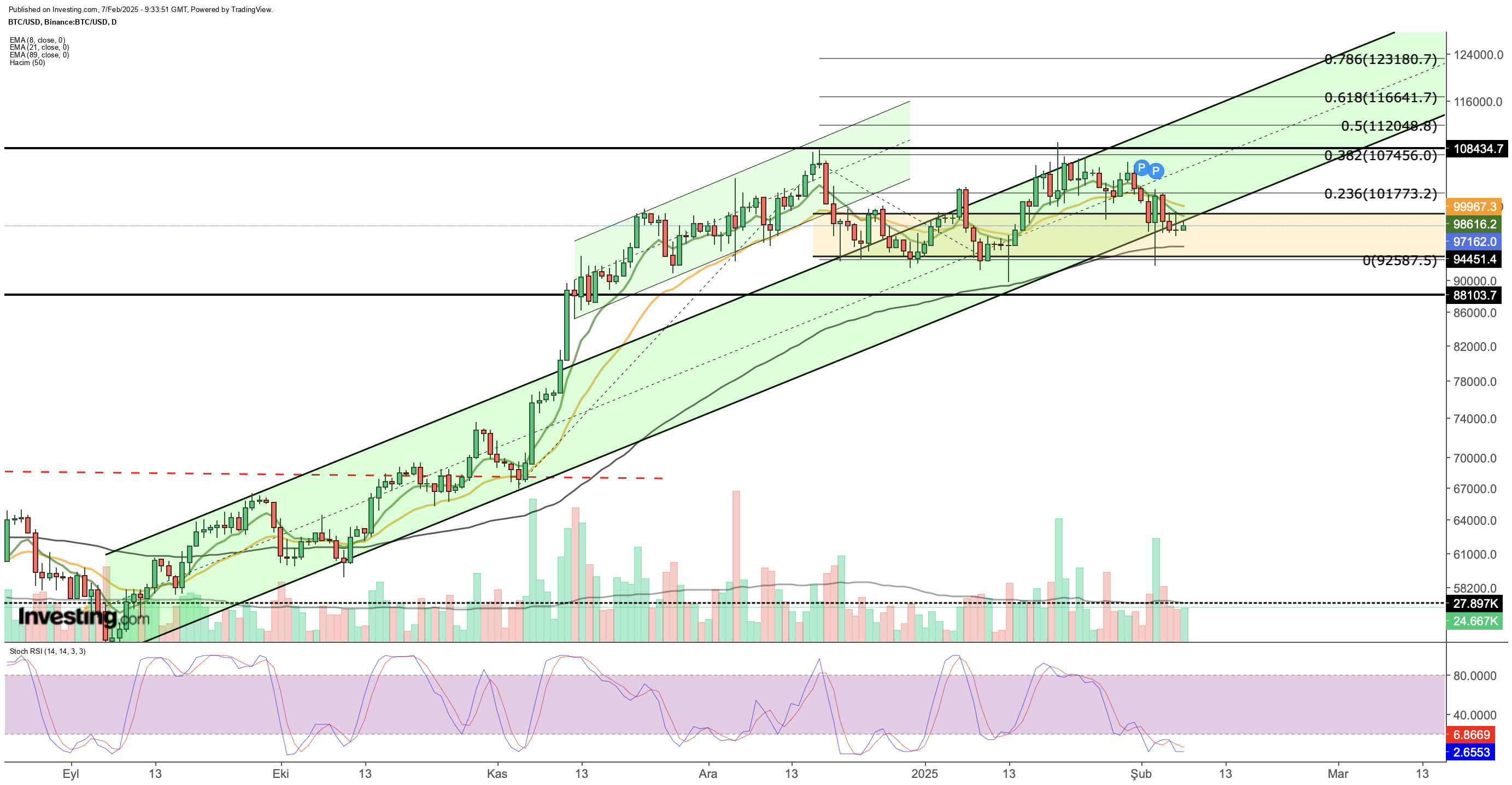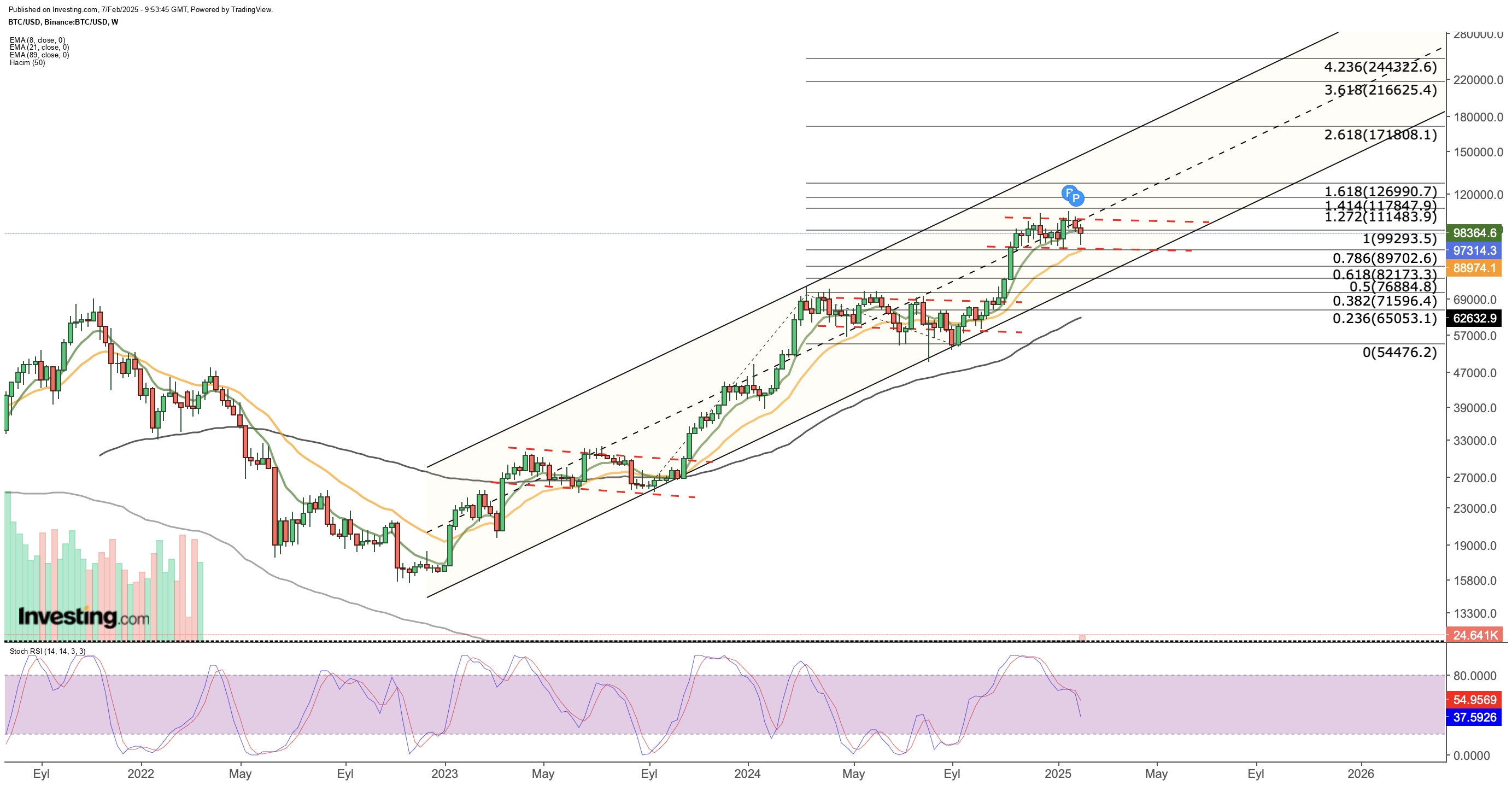-
Bitcoin’s struggle at $100K could decide if bulls take charge or sellers drive it lower.
-
Institutional buying signals confidence, but economist Eugene Fama warns Bitcoin may hit zero.
- Trump’s pro-crypto stance lifts sentiment, but Bitcoin’s fate hinges on adoption and regulation.
- Looking for actionable trade ideas to get in on winning stocks early? Unlock access to InvestingPro’s AI-selected picks for February using this link.
Bitcoin's price action remains volatile, with the $100,000 level serving as a critical pivot point in early 2025. Institutional interest remains strong, and the pro-crypto stance of U.S. President Donald Trump has fueled optimism for the market’s future. However, some economists warn of a potential long-term collapse. Nobel Prize-winning economist Eugene Fama predicts that Bitcoin could reset to zero within a decade.
With bullish momentum building in the short term but skepticism lingering in the long run, the big question is: Could Bitcoin really become worthless, or is it on the path to new highs? Let’s break down its current trajectory, the risks ahead, and what investors should watch.
Bitcoin’s Short-Term Outlook: Will It Break $100K?
Bitcoin has faced selling pressure in recent days, pulling back after hitting a peak of $109,000. It briefly found support at $101,000 but is now testing another key level at $96,500. Attempts to reclaim $99,000 have been weak, keeping traders cautious.

The cryptocurrency’s inability to hold above $100,000 has added to investor uncertainty. A recent wave of tariff disputes in global markets has dampened risk appetite, further weighing on Bitcoin. While altcoins have suffered heavier losses, Bitcoin has shown relative resilience as long-term holders withdraw assets from centralized exchanges. According to Glassnode, 170,000 BTC were moved off exchanges in a single day—one of the largest outflows since April 2024. Such movements often signal accumulation by institutional investors betting on higher prices.
Technically, Bitcoin is approaching the lower boundary of its short-term ascending channel. A sustained break below this level could trigger further declines. If the price fails to reclaim $99,000 by the end of the week, sellers could push Bitcoin toward key support at $92,500. A break below that level may lead to a deeper slide toward $87,500 and even $80,000.
On the flip side, for Bitcoin to regain bullish momentum, it needs a daily close above $99,000, followed by a breakout past $101,700. If buyers regain control, surpassing recent highs could ignite a rally toward $120,000, in line with Fibonacci projections.
Could Bitcoin Collapse to Zero? The Fama Debate
Eugene Fama, a Nobel Prize-winning economist, argues that Bitcoin’s extreme volatility and lack of intrinsic value make it unsustainable. He believes Bitcoin fails as a currency because its price swings make it impractical for daily transactions. He also dismisses the idea that Bitcoin is a digital version of gold, stating that its value is purely speculative.
However, Bitcoin’s track record challenges these claims. Over the past 15 years, it has evolved into a widely recognized store of value, outperforming traditional assets during inflationary periods. Unlike fiat currencies, Bitcoin’s supply is capped at 21 million, and its decentralized Proof-of-Work (PoW) mechanism ensures network security.
While Bitcoin’s short-term price movements are influenced by macroeconomic factors, its independence from government control makes it an attractive alternative to traditional financial systems. Institutional adoption has continued to rise, and historical price cycles suggest Bitcoin has repeatedly recovered from sharp drawdowns.
For Bitcoin to truly "reset," a major global ban or a severe structural flaw would need to emerge. However, regulatory trends suggest governments are moving toward clearer rules rather than outright prohibitions. A coordinated, worldwide ban seems increasingly unlikely.
Bitcoin’s Long-Term Path: Boom or Bust?
Institutional adoption and government policies will play a crucial role in Bitcoin’s future. Trump's push to position the U.S. as a global crypto hub has provided a boost to sentiment. If his administration maintains a favorable stance, Bitcoin demand could strengthen in the coming years.

From a technical perspective, Bitcoin has maintained a long-term uptrend. It consolidated between March and September in both 2023 and 2024 before breaking higher. Currently, it remains in another consolidation phase, with a key resistance zone at $105,000 and support near $89,000.
If Bitcoin holds within its broader ascending channel, price action could remain range-bound in the short term. However, a breakout above $105,000 could set the stage for a rally toward $170,000 by the end of the year. In an extended bull cycle, Bitcoin could even reach the $220,000–$240,000 range.
For now, the critical factor remains Bitcoin’s ability to stay within its long-term uptrend. If it does, history suggests new all-time highs could be on the horizon.
Disclaimer: This article is written for informational purposes only. It is not intended to encourage the purchase of assets in any way, nor does it constitute a solicitation, offer, recommendation or suggestion to invest. I would like to remind you that all assets are evaluated from multiple perspectives and are highly risky, so any investment decision and the associated risk belongs to the investor. We also do not provide any investment advisory services.
